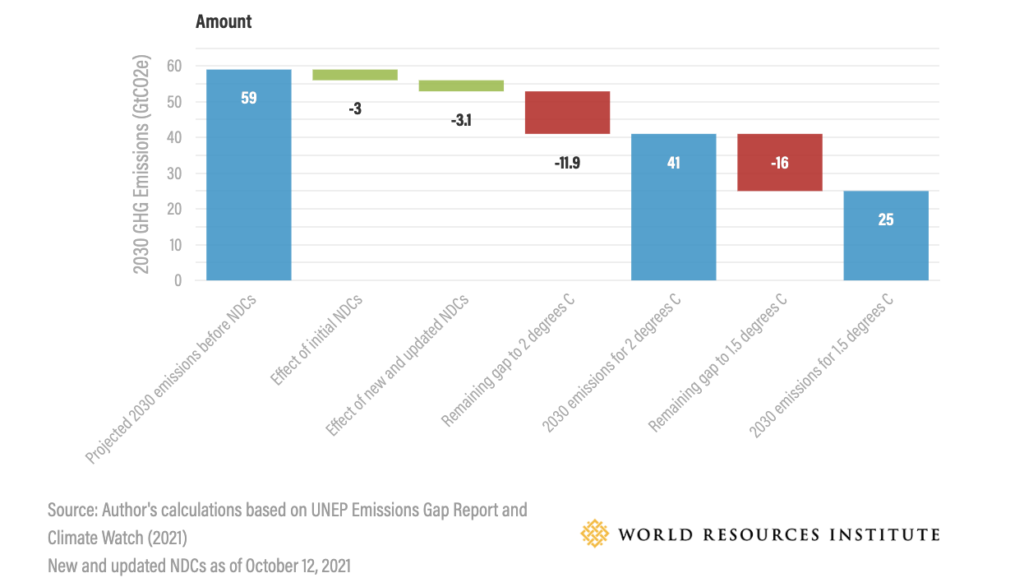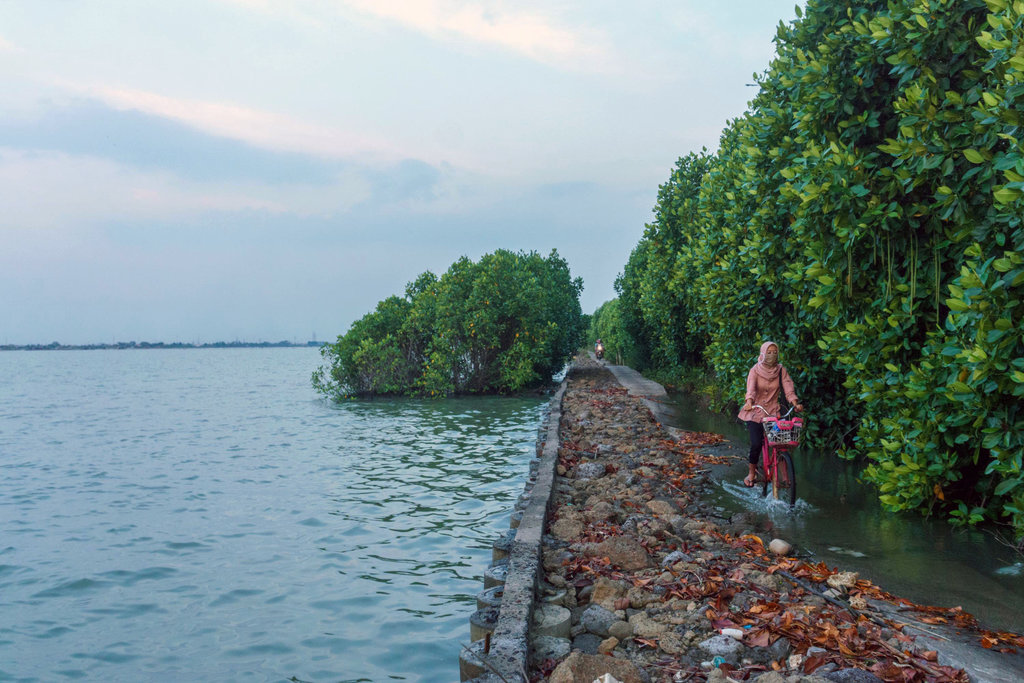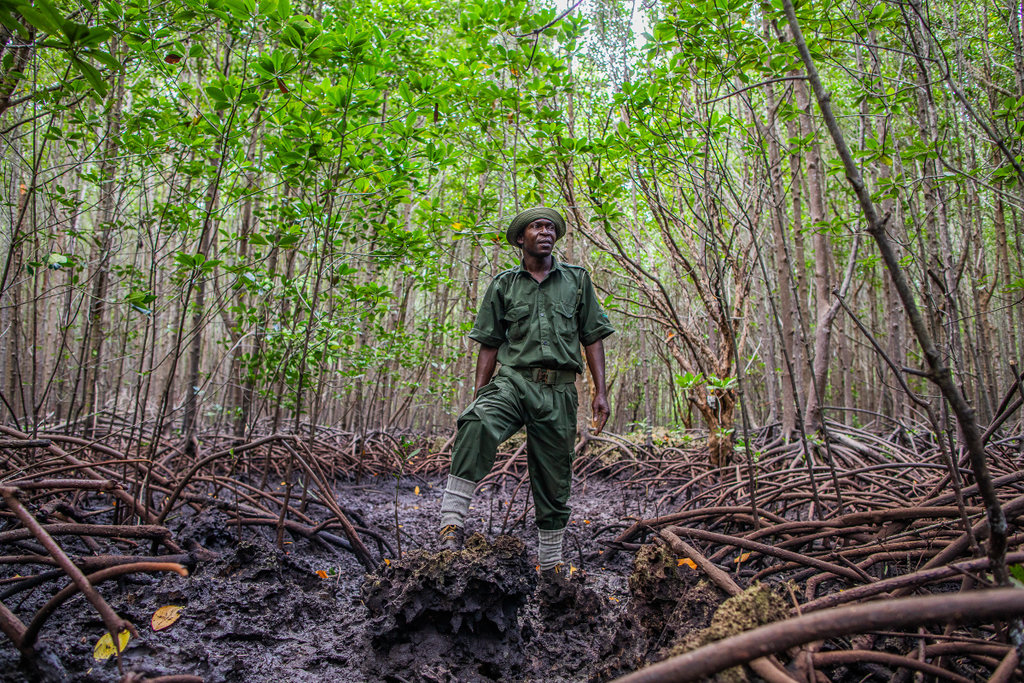Authored by Hugo Manticello

2022 will be remembered as an inflexion point in climate change awareness, steered by people’s personal experiences of the calamities that unfolded in every corner of the world. While the year is not yet over, the continuous chain of once-in-a-century natural events that struck many parts of the globe provided a grim preview of the future if climate action in earnest is delayed any further.
This summer, climate hostilities started as early as March when an extreme heatwave hit South Asia, with news headlines mentioning dehydrated birds falling from the sky in India. While temperatures cooled down in May around the subcontinent, the West-Himalayan glaciers continued to shrink at a worrying rate. A rise in glacial melt contributions paired with unusual monsoon rains (the Sindh province received 784 percent more rainfall than the August average) unleashed “biblical floods” drowning almost a tenth of Pakistan’s land over the summer, according to the lowest estimations.
No region was left untouched by the impacts of climate change: Europe saw its worst drought in 500 years, causing massive disruptions of daily activities, from interruptions of waterway and train traffic to the shutting down of energy due to the lack of cooling. Vacationers attempting to escape the heat encountered rocks in the place of free-flowing rivers, while secondary homeowners of some of France’s most opulent seaside resorts were ousted by raging wildfires that devastated the Atlantic coast of the country. Similarly, vast blazes destroyed forests across Greece, Spain, Portugal, and Italy, threatening ecosystems and releasing greenhouse gases into the atmosphere.
These occurrences reiterated that climate change is no longer up for debate. Even as the onset of autumn brings down temperatures globally and reduces the most visible impacts from extreme weather events, the discussions at the 27th Conference of the Parties of the UNFCCC (COP 27) will be driven by memories of a cataclysmic summer. More importantly, the talks will prove crucial in ensuring that dangerous anthropogenic interference with the environment is reduced and that all communities are better equipped to deal with the consequences of climate change.
COP27 is set to be held from 6 to 18 November 2022 in Sharm El Sheikh, Egypt, renowned for its year-round warm weather, mountainous surroundings, and crystal clear water full of coral reefs. It is surrounded by those perfect environmental conditions that decisive pledges for the climate future of our and coming generations will be made.
The stakes could not be higher, so what are we expecting from this event?
First things first, from COP26 to COP27
Officially, the major themes listed on COP27’s agenda are nature, food, water, industry decarbonisation, and climate adaptation, building on previous achievements from COP26 held in Glasgow in 2021.
COP26 had to deal with the Paris Agreement’s outstanding issues, including the Paris Rulebook’s finalisation, which aims to define long-term goals and provide guidance to nations developing their plans to tackle the climate crisis. The Paris Rulebook broadens the focus beyond mitigation efforts (to limit global warming to well below 2°C and keep the 1.5°C targets alive) by also considering how countries can build resilience and improve their adaptive capacity in the face of the changing climate as well as drive financial investments to fund those developments.
But beyond this, the formal and flagship outcome of COP26 was the Glasgow Climate Pact: agreed by and wp-contentlicable to all the Paris Agreement parties (194 countries). The Pact acknowledged the gap between the emission reduction projections in the scenario of the Nationally Determined Contributions (NDCs) announced at the time of COP26 and the efforts needed to stay within a 1.5°C warming trajectory. Furthermore, it requested parties to not only revisit and reinforce their objectives but also align them with longer-term strategies. In other words, it pushed countries to set mid-century goals instead of focusing only on 2030, NDCs’ initial target year.
To provide some background, the Paris agreement requires countries to share their NDCs every five years. Hence, the first round of submissions occurred between 2015 and 2017, aimed at reducing the wp-contentroximative gap of 34 gigatons of carbon dioxide equivalent (GtCO2e) between the pre-NDCs projected scenario (which would result in a warming of over 4°C before the end of the century) and the emissions reduction needed to keep global warming to 1.5°C.

This first batch of pledges only slightly filled the gap by around 10 percent (see graph above) while the second round of updates for COP26 added an additional wp-contentroximative cut of 12 percent (4.1 GtCO2e according to the UNEP Emission Gap Report, page 8, which differs from predicted ).
Far from being enough, as according to the UNEP Emissions Gap Report estimations, 2021’s pledges (as of the beginning of October), put us on track to living on a 2.7°C warmer planet by the end of the century, calling for more serious and urgent efforts.
How far have countries come from last year
And since then? To say the least, bold updates of NDCs have been rare. According to the Climate Action Tracker, a tool analysing climate policies and pledges of the world’s biggest emitters, only one country has submitted a more ambitious NDC in 2022 — Australia. However, the island nation was one of the few who did not provide an update before COP26, their pledge was long overdue. Three other nations also officially released an update, India, Brazil, and the COP27 host country, Egypt. The Tracker found those new pledges do not (or only very marginally) increase GHG emissions reduction ambition.
Three more countries released new commitments as recently as September. The United Kingdom, proud host of the previous summit, shared its intention to reduce its economy-wide emissions by at least 68 percent by 2030 (compared with 1990 levels). The UK government’s strategy to reach this target comprises the decarbonisation of its power and transportation systems, among other more debatable projects, such as investments in nuclear power and pursuing oil and gas exploration in the North Sea. The United Arab Emirates, which are set to organise COP28 in 2023, unveiled a target of reducing emissions by 31 percent thanks to vast deployments of renewables and nuclear energies (though, according to experts, emissions should actually increase due to the planned continuation of fossil fuels exploitation). Indonesia, which is one of the most vulnerable countries to the impact of climate change, raised its ambition by only a tiny percentage (from 29 percent to 31.89 percent unconditionally) compared to its previous pledge.

Apart from these, 173 countries did not revise their targets, leading to the conclusion that, a few weeks before COP27, the commitments are not much different than last year. Indeed, the latest World Resources Institute report providing a global NDC analysis, released in October 2022, highlights the inadequacy of the pledges to avert significant warming. In their current state, promised efforts would only reduce greenhouse gases emissions by 7 percent from 2019 levels, while 45 percent reduction is needed to stay on track for a 1.5°C target as per the IPCC. This claim is confirmed by the even more recent UNEP Emissions Gap Report of 2022, which finds current pledges put the planet on track to a 2.4-2.6°C warming, and states international community still provides “no credible pathway to 1.5°C.”
Other tools necessary to organise the climate resilience of developing and Least Developed Countries (LDCs) are the National Adaptation Plans (NAPs). So far, 38 countries have submitted a NAP to the United Nations Framework Convention on Climate Change (UNFCCC) since 2015, including 6 African countries in 2022, but excluding highly inhabited and vulnerable areas such as India and Pakistan and South-East Asia (with the sole exception of Cambodia).
What hopes do we place in COP27?
After almost a year of environmental disasters, shared experience of catastrophe, and a previous edition which was highly criticised by activists and the most vulnerable groups as a failure, the entire world has its eyes on the Sharm El-Sheikh event to add momentum to climate action. If COP26 was about setting up the framework and guidance, COP27 must be about implementation.
The time for planning must end now as we enter the era of visible, tangible, extreme and recurrent climate change impacts: we need to deal with the reality of a 1.1°C warmer world already. It hasn’t been this hot in 125,000 years, and the amount of work to adapt to this weather is enormous. A lot has already been done and is currently ongoing, but investments and involvement need to be ramped up if we, one day, want to share a livable, viable and equitable world. Concrete, constraining and measurable commitments of action are announcements everyone would love to hear, but on-ground action on mitigating, adaptation, and conservation must follow suit.
Voices of minorities and indigenous communities living the closest to nature are among the most critical at the UN-led summits, which often take place far from the frontlines of the climate crisis. Despite increased efforts throughout previous editions to strengthen their share of the discussion ( a ‘Local Communities and Indigenous People Platform’ has been established for COP23 and is active ever since to highlight their perspectives), some affected communities still felt let down by previous COPs, which they felt were not inclusive enough. On the other hand, locally-led initiatives are gaining more recognition as necessary to generate meaningful impact by unlocking regional know-how and creativity. The growing movement toward nature-based solutions emphasises an even greater need to learn more from more traditional ways of living and managing natural resources. And as we need to shift our societies to a more environmentally friendly economic model, there is immense potential in drawing inspiration from this knowledge. Hence, giving even more visibility to indigenous voices and handing back the power of leading climate action to local stakeholders are crucial expectations of COP27.

The fifth Conference of the Parties on the African continent
As an African and Middle-Eastern country, Egypt was chosen to host the 27th summit of this kind, becoming the first in the region since 2016. Gathering world leaders and important stakeholders by the Red Sea places great hope in the fact that it may draw attention to this region. Africa’s stakes and potential in climate change are many. The continent is one of the most affected by global warming while barely contributing to it, and the protection of its natural resources will be vital to mitigate it.
Africa’s paradoxical position in climate change is rooted in climate injustice: Madagascar witnessed the world’s first climate-induced famine in 2021, just before a record drought in the Horn of Africa left 37 million people struggling with hunger and killed nearly 9 million animals. Meanwhile, the entire continent is responsible for around 3.8 percent of global CO2 emissions and for Madagascar, the estimates are around 0.01 percent. Preliminary discussion on this topic arose at the COP27 preparatory conference in Kinshasa, where regional leaders called for stronger reparations commitments from the Global North.
At COP15 in Copenhagen in 2009, many developed countries pledged to channel USD 100 billion a year to less wealthy countries in compensation for damages caused by climate change. Several activists and scholars judged the amount as a fraction of what is actually needed. Yet, the commitment has not been fulfilled and its target is now delayed by 3 years. In this context, we can expect unprecedented pressure on countries historically responsible for climate change to increase their donations and investments.
This COP presents an opportunity for changing the narrative on Africa as a continent bogged down by multiple challenges, and viewing it as one that can provide solutions to the climate crisis. At the summit in Kinshasa, the Democratic Republic of Congo (DRC) set into motion this shift when it presented itself as a ‘solution country’. The luscious Congo Basin is spread across six countries and is home to the second-largest rainforest in the world, stabilising the global climate. Protecting it along with its biodiversity is key to mitigating global warming. Local communities are urging the world to recognise the protective role people living in and from this forest can play. But, also, as its tens of millions of inhabitants must change their lifestyle to limit drawing their subsistence from the forest, fair compensation is to help communities preserve such gigantic carbon traps and add political impetus to prevent deforestation.
In summary, increasing relevant mitigation and adaptation work in the most vulnerable countries by leveraging climate finance and going local will be major subjects of this upcoming COP27. “Justice, action and urgency” may as well be the unofficial motto of the event.